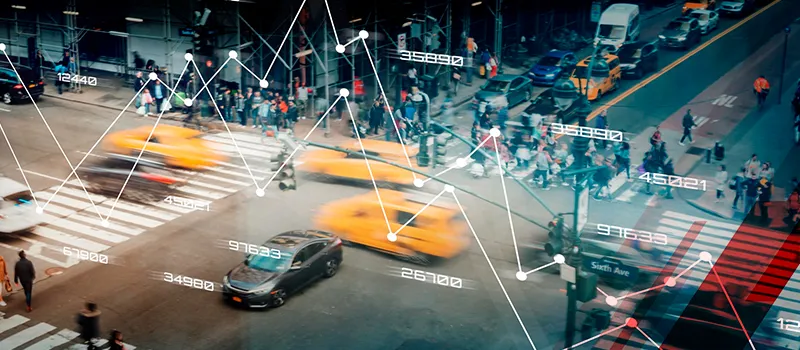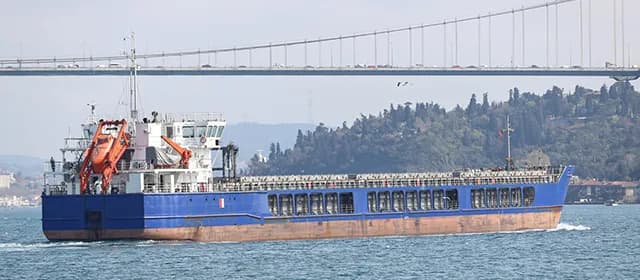Traffic congestion is a widespread problem in cities around the world, and it's only getting worse as urban populations grow. However, thanks to advances in technology, transportation professionals have a powerful tool at their disposal: traffic simulation systems.
According to Kings Research, the Traffic Simulation Systems Market is projected to reach a valuation of USD 7.83 billion by 2030, growing at a CAGR of 8.61% from 2023 to 2030. So, let us explore the world of traffic simulations, including their potential and leading brands reshaping the transportation industry.
What Exactly is a Traffic Simulation System?
Traffic simulation systems refer to the mathematical modeling of transportation systems using computer software to mimic or simulate real-world traffic flow. This allows for the testing of different scenarios and ideas and can support informed decision-making related to transportation infrastructure.
Traffic simulation plays a vital role in understanding and improving transportation networks. They provide valuable insights into traffic behavior, allowing engineers and planners to optimize road design, traffic signal timings, and overall traffic management strategies.
How Do Various Industries Benefit from Traffic Simulation Systems?
Here are some significant benefits of traffic simulation systems:
- Urban Planning
Traffic simulation systems assist urban planners in designing efficient road networks and evaluating the impact of proposed changes. By simulating different scenarios, planners can make informed decisions that improve traffic flow and reduce congestion.
- Transportation Engineering
Traffic engineers rely on simulation systems to analyze traffic patterns, plan highway expansions, and optimize the performance of existing roadways. Simulation models allow them to test the effects of lane closures, traffic signal timings, and other factors before implementing changes in the real world.
- Public Safety
Emergency service providers use traffic simulation systems to optimize response times during emergencies, ensuring that their vehicles reach their destinations quickly and safely.
- Environmental Impact Assessment
Traffic simulation helps assess the environmental impact of proposed road projects. By analyzing traffic volume, emissions, and potential congestion, planners can take measures to minimize adverse environmental effects.
Leaders in Traffic Simulation Systems Promoting Sustainable Transportation
Several companies specialize in technologies and offer innovative solutions for traffic simulation systems. Some of these companies include:
1. PTV Group
PTV Group’s Vissim Kernel offers detailed and realistic simulations of the entire traffic environment, including the movements and interactions of different road users and modes of transport. With this software, innovative concepts and services such as mobility-as-a-service, shared mobility, and self-driving can be evaluated and verified in a virtual environment.
The automotive industry relies on simulations for advanced driver assistance systems, connected and autonomous vehicles, and emission regulation testing. A subscription-based solution supports high-performance computing and can be integrated with other systems for parallel simulation runs.
2. Micro Nav Limited
Micro Nav Limited, a Bournemouth-based provider of air traffic control and airport simulation systems, has won the Queen's Award for Enterprise for International Trade. The award acknowledged the company's exceptional performance in exporting high-tech airport training and air traffic control systems. Micro Nav has expanded its software portfolio, including the Fast Airport Builder tool and the Airside Driver Trainer.
The BEST simulation software is employed for ATC (Airport Traffic Control) training, airport design, evaluation, and research. It is scalable and accessible via the Cloud with BEST Remote. With BEST Insights, the firm provides metrics for training, operational, safety, and environmental use. It offers high-fidelity simulation solutions for controllers, is robust, and continuously develops to stay competitive.
3. AnyLogic
AnyLogic is a simulation software that offers a Road Traffic Library for modeling and simulating traffic flows at a detailed physical level. This library is ideal for the layout and simulation of traffic on highways, streets, manufacturing sites, parking lots, and other systems with vehicles.
The AnyLogic Road Traffic Library allows users to design and simulate traffic flows at a physical level, modeling driver behavior, and transportation dynamics. It includes predefined algorithms for driving regulations and allows for 2D and 3D models of vehicles and surroundings. The software supports mixed simulation methods and offers optimization tools for traffic light management.
4. INRO
INRO offers transportation planning and traffic simulation software solutions, including urban and transportation planning software. The company is a recognized worldwide leader in software for travel forecasting, transportation planning, traffic simulation, and mobility analytics.
INRO's simulation software, Dynameq, a vehicle-based traffic simulation, and DTA (dynamic traffic assignment) software, combine mesoscopic and microscopic properties to create a traffic simulation fit for planning the city. Dynamic offers scalability from a single crowded corridor to an entire city, all without losing detail. Vehicle trajectories across networks of cities, ensuring transparency and enabling users to show the network's status, regardless of location and time.
5. Fujitsu
Fujitsu has been working on innovating traffic simulation systems, as well as in other areas related to transportation and logistics. Fujitsu offers a range of software and technology solutions that are designed to help improve transportation systems and address traffic congestion. For example, Fujitsu has developed a Traffic Simulation and analysis map in partnership with Hexagon, which helps users plan smarter cities by visualizing transportation data and simulating traffic scenarios.
Fujitsu has also explored the use of quantum computing to improve traffic flow and has developed a system that combines real-time sensor data, parallel traffic simulations, and quantum-inspired optimization to create better traffic flow.
Making the Way Through Traffic
Traffic simulation solutions will continue to play a vital role in transportation planning and logistics. By using advanced simulation software and emerging technologies, traffic simulation is becoming more sophisticated and accurate than ever before.
As urban populations grow and transportation systems become more complex, traffic simulation systems will continue to be an essential tool for transportation professionals and policymakers alike. Ultimately, by improving our understanding of transportation systems and predicting traffic patterns, traffic simulation systems can help us create more efficient, sustainable, and livable cities.




